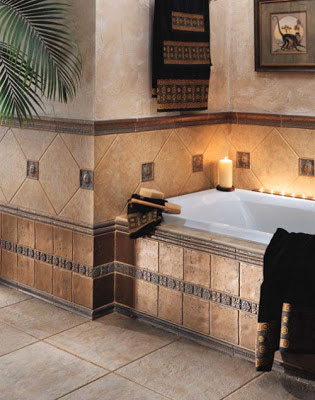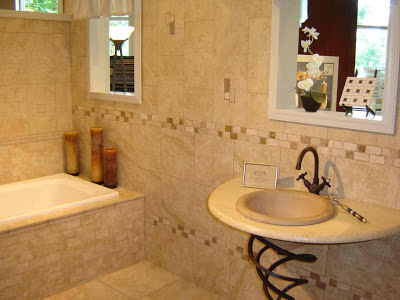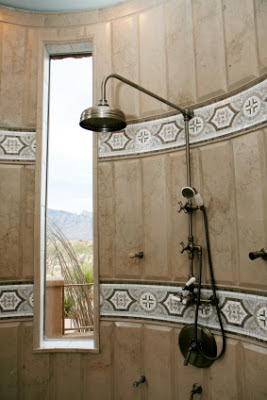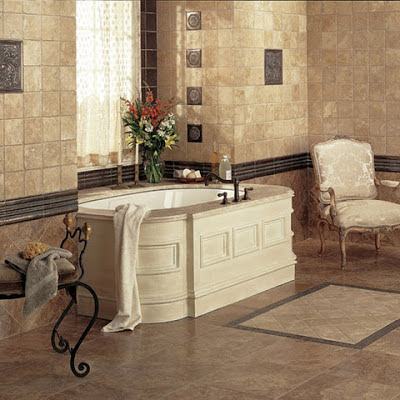Good bathroom tile design should create a floor surface that is attractive, water resistant and safe to walk on. Bathroom tile designs using ceramic tile, rubber flooring or vinyl and linoleum floors are examples of bathroom tile design material choices that should be available nearly anywhere. These types of tiles are easy to clean, water resistant and safe to walk on. If you are going to use natural stone or terra-cotta ceramic tiles on your floors to create a more sophisticated effect, make sure you buy the kind with a non-slip finish.
As you consider which bathroom tile designs to select, each type of tile will have unique properties that may or may not provide characteristics that are good for your bathroom. Here are different material types for bathroom tile design along with advantages or disadvantages of each:
Laminate and Vinyl Bathroom Tile Design - these types of tile in bathroom tile designs can be found in a variety of colors, patterns and textures. Some tiles even imitate wood, stone and ceramic. It is not very expensive, is water resistant, easy to install and clean and it is durable.
Ceramic Bathroom Tile Design - ceramic tile can range from fairly cheap to expensive and it is the classic choice. Tile is made of clay, shale or porcelain and is formed and fired at very high temperatures until it hardens. The higher the temperature and the more times the tile is fired, the harder and less porous the tile.
If you are using a white or cream ceramic tile for your bathroom, using a different color grout like "blue" will give your bathroom a dramatic look. Grout is the material used to fill the spaces between the tiles. Make sure you apply sealers to grout lines in areas of heavy wear like countertops. Sealers will also preserve grout colors.
Stone Bathroom Tile Designs (marble, granite, brick, slate, onyx, travertine and limestone) - this tile can be beautiful, very strong, durable in high-traffic areas, it will last a long time, is low maintenance and easy to clean. However, it is expensive, it's a cold material, can be slippery and absorbs stains easily.
Linoleum Bathroom Tile Design - this tile is made of renewable and natural materials like linseed oil, ground cork, limestone, jute and wood flour. This type of bathroom floor is making a comeback with new marbled and graphic designs, and it is more durable and easier to clean than vinyl tile.
Mosaic Bathroom Tile - this wonderful tile was an ancient craft that today can be made of tile, stone, porcelain and colored glass, creating stunning floor patterns. These tiles are small (1 or 2 inches square) and often expensive. What you can do is to add a small section of this type of tile for visual interest to your floor or countertop.
Concrete Bathroom Tile Designs - durable, low maintenance, perfect for wet areas and stunning. You can find this type of tile in beautiful textures such as shiny, rough, slick and sandpaper and in various colors and sizes.
Hardwood - you can build your bathroom floor using solid wood, parquet flooring or engineered woods (several layers of wood laminated and high-tech materials that are similar to plywood). Hardwoods are wear-resistant, attractive, comfortable to walk on, easy to clean and refinish, not very cold in winter, but they are more vulnerable to moisture when used in a bathroom.
If you want to use a bathroom tile design that includes rugs in your bathroom, make sure you buy the kind that has rubber backing, or add rubber backing strips to the rugs. Be careful with rugs that can slip and slide on a tiled floor or natural stone floor which creates a safety hazard. Rugs can also harbor dust mites and allergens which is a problem for people with allergies.

















